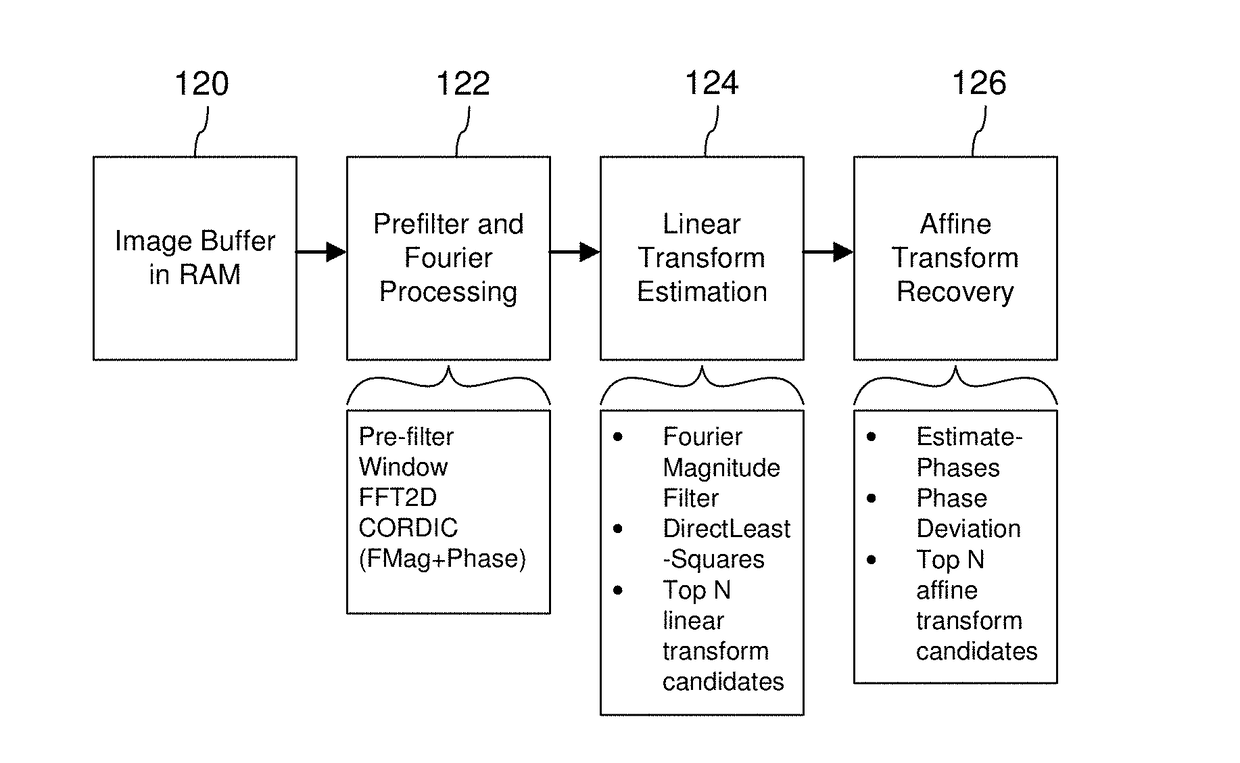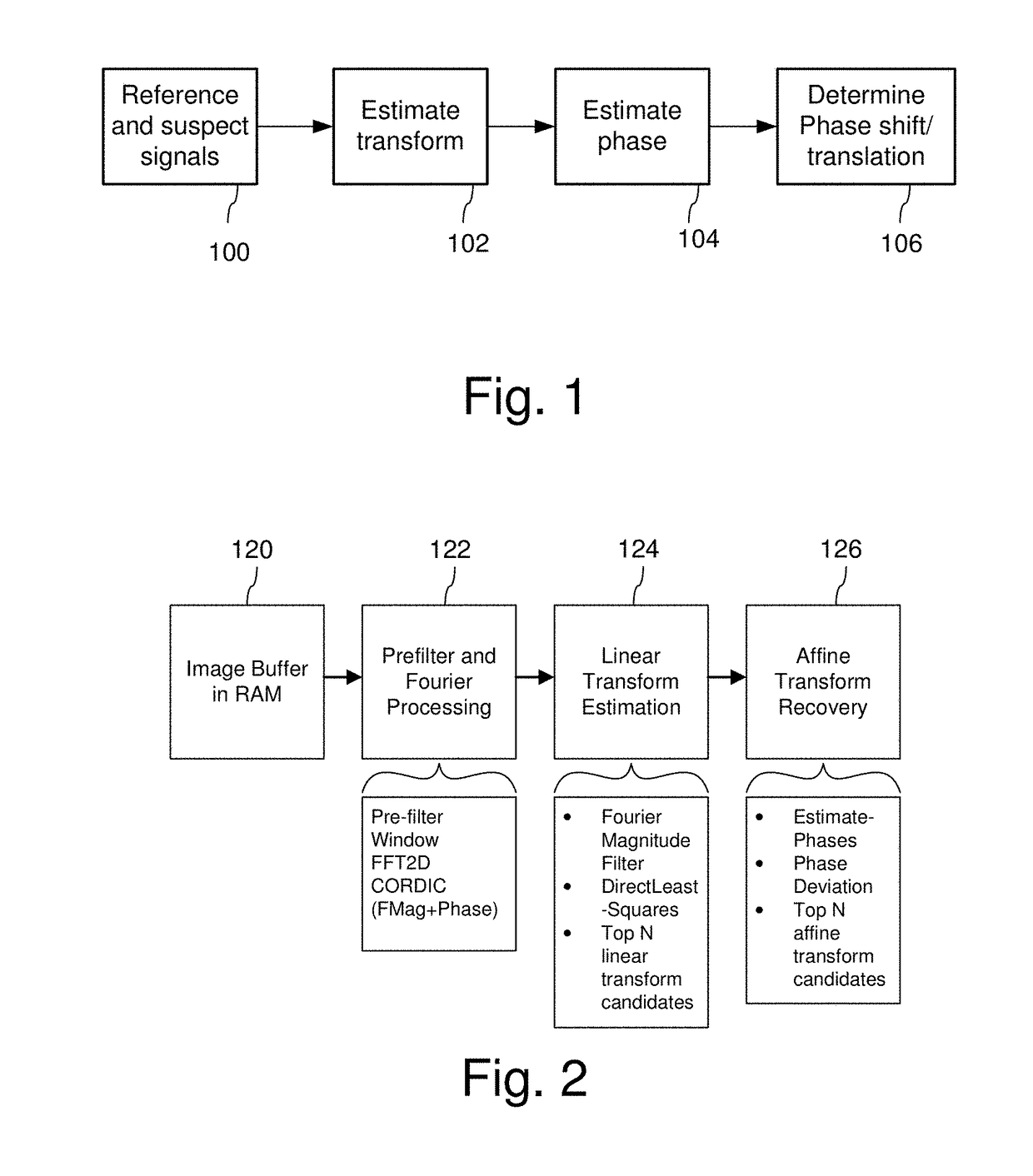Signal Processors and Methods for Estimating Geometric Transformations of Images for Digital Data Extraction
a signal processor and geometric transformation technology, applied in the field ofsignal processing, can solve the problems of distorted signals captured in these devices, more difficult to accurately detect, recognize or match the reference signal with its counterpart in the suspect image, and difficult to achieve the objective, so as to speed up the recovery of geometric transformation, improve the accuracy of correlation measurement, and improve the accuracy of correlation.
- Summary
- Abstract
- Description
- Claims
- Application Information
AI Technical Summary
Benefits of technology
Problems solved by technology
Method used
Image
Examples
examples of embodiments
[0273]This section provides examples of various inventive configurations of technology described in this document.
[0274]A1. A system for determining a geometric transform of an image signal, the system comprising:
[0275]memory in which is stored a reference signal and an image, which includes the reference signal;
[0276]a programmed processor, the programmed processor executing instructions to:
[0277]transform components of the reference signal by applying a geometric transform to the components, the geometric transform starting with transform candidate seeds, the transform candidate seeds comprising rotation angle, scale, shear and differential scale parameters;
[0278]compute correlation between the transformed reference signal components and the image;
[0279]sample the image to determine new locations neighboring the transformed components;
[0280]update the geometric transform by determining a least squares transform that transforms the components of the reference signal to the new loca...
PUM
 Login to View More
Login to View More Abstract
Description
Claims
Application Information
 Login to View More
Login to View More - R&D
- Intellectual Property
- Life Sciences
- Materials
- Tech Scout
- Unparalleled Data Quality
- Higher Quality Content
- 60% Fewer Hallucinations
Browse by: Latest US Patents, China's latest patents, Technical Efficacy Thesaurus, Application Domain, Technology Topic, Popular Technical Reports.
© 2025 PatSnap. All rights reserved.Legal|Privacy policy|Modern Slavery Act Transparency Statement|Sitemap|About US| Contact US: help@patsnap.com



